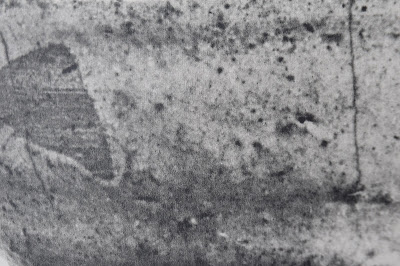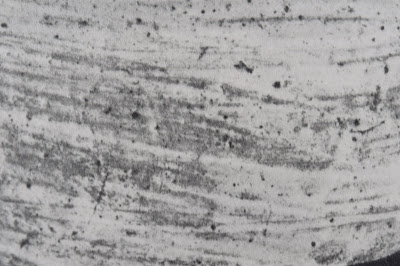Outpost 220324
Japanese Pottery/Raku Bowls.
Drawing, the layers create an aggregate, they are generative rather than descriptive.
Carlo Scarpa.
Between the Shape of Light and the Shape of Things.
I believe that it is art that makes us grasp the reality of the world. It is the effort that human beings have made since the beginning. To make clear for themselves through forms, their own existence.
Carlo Scarpa. 1978
Scarpa finds rhymes/waves, conversations between the structural forms and the shapes of the objects, he designed with transformation and decay in mind. He knew how to wait, how to let ageing and patina complete their work.
The creative consciousness of collapsing time and of death marks all Scarpa's strategies and narratives. At Castelvecchio he leaves great distances between objects allowing them to converse with one another solitarily. His job he believed was not to show himself but to show the works and lend them sight, intensifying their resonance with one another and setting up dialogues between them and the architecture.
Light as a Mutable Presence.
Scarpa needed a light that moves, to give depth to the surface of the casts and to lead them into conversation. I set up my work by pairing like images, to show the different character of pieces as the fall of light changes, not to show light is brought in, but to account for its effects. Each work becomes solitary, tranquil but together they engage in a distant conversation, a little distracted as if in a world of their own. They look at one another from their private pools of illumination.
Guido Guidi.
And what of the present?
The present has no duration, when I measure time, I measure impressions, modifications of consciousness.
Saint Augustine.
Few architects have dealt with the kind of luminosity, reflection and the sheen of materials as that which preoccupied Scarpa.
The Chapel of St Ignatius.
Steven Holl.
Architecture holds the power to inspire and transform our day-to-day existence. The everyday act of pressing a door handle and entering into a light washed room can become profound when experienced through sensitized consciousness. For Holl to hear, feel and see these physicalities is to become a subject of the senses.
Goethe, one should not seek anything behind the phenomena, they are lessons themselves.
The spiritual exercises of St Ignatius of Loyola argues for a philosophical interpretation of the senses. This work preceding later writings on phenomenology by 300 years, critically re-orders the hierarchy of the five senses. Hearing becomes the most refined sense, while sight the traditionally dominant sense comes third after touch.
A Gathering of Different Lights.
Vision.
Realization.
Radiance/Illumination.
The Haptic Realm.
Studies in Light.
Steven Holl in 'Questions of Perception' describes a phenomenology of architecture that argues for a heightened development of spatial and experiential dimensions through individual reflection on the senses and perception. Holl comments on the need to open ourselves to perception, we must transcend the mundane urgency of 'things to do'. We must try to access that inner life that reveals the luminous intensity of the world, only through solitude can we begin to penetrate the secrets around us. An awareness of one's unique existence in space is essential in developing a consciousness of perception.





No comments:
Post a Comment